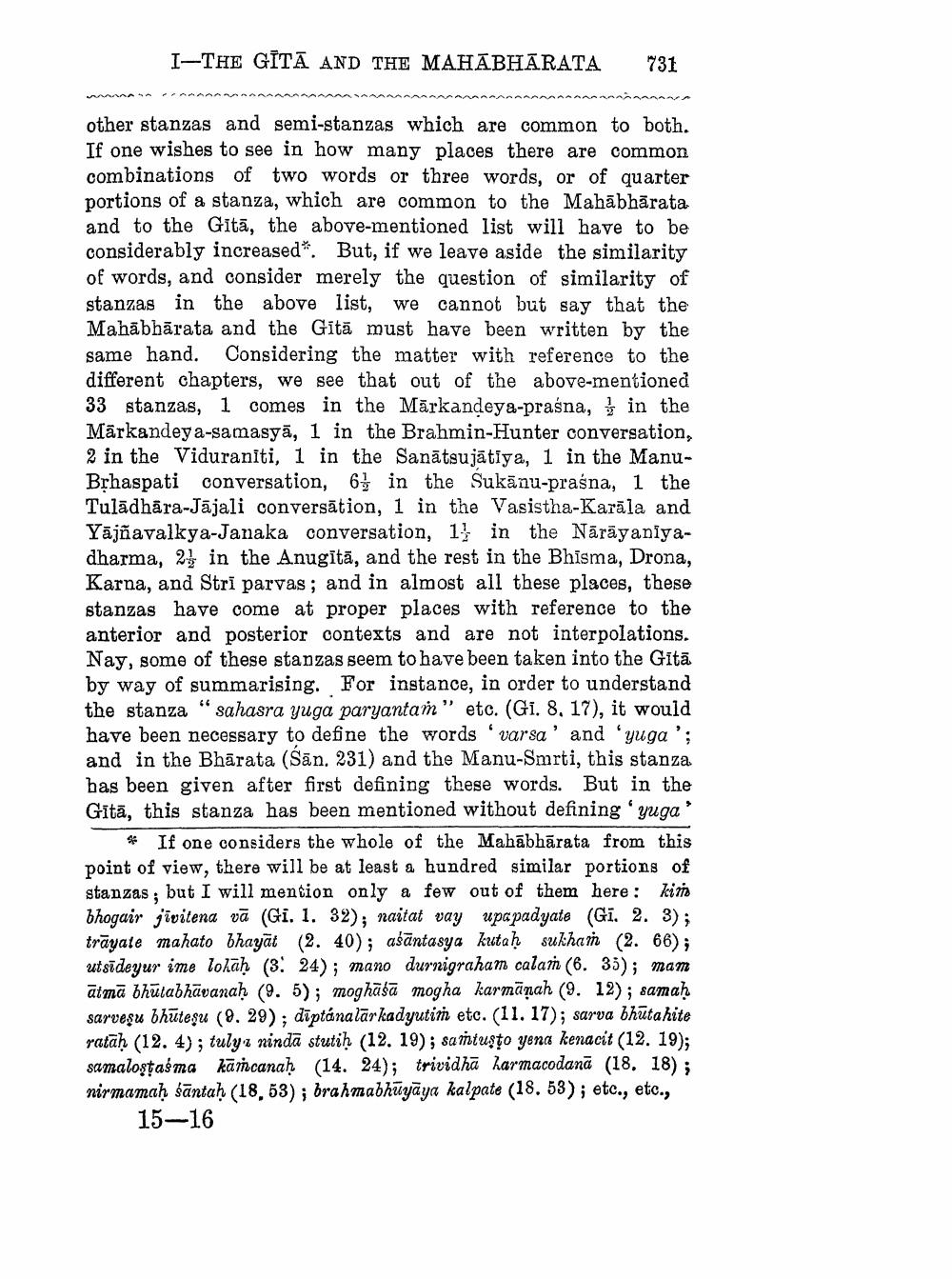________________
I-THE GĪTĀ AND THE MAHABHARATA
731
other stanzas and semi-stanzas which are common to both. If one wishes to see in how many places there are common combinations of two words or three words, or of quarter portions of a stanza, which are common to the Mahābhārata and to the Gitā, the above-mentioned list will have to be considerably increased*. But, if we leave aside the similarity of words, and consider merely the question of similarity of stanzas in the above list, we cannot but say that the Mahābhārata and the Gitä must have been written by the same hand. Considering the matter with reference to the different chapters, we see that out of the above-mentioned 33 stanzas, 1 comes in the Mārkandeya-praśna, in the Mārkandeya-samasyā, 1 in the Brahmin-Hunter conversation, 2 in the Viduraniti, 1 in the Sanātsujātiya, 1 in the ManuBphaspati conversation, 63 in the Sukānu-praśna, 1 the Tuladhāra-Jājali conversātion, 1 in the Vasistha-Karāla and Yājñavalkya-Janaka conversation, 11 in the Nārāyaniyadharma, 21 in the Anugītā, and the rest in the Bhisma, Drona, Karna, and Stri parvas; and in almost all these places, these stanzas have come at proper places with reference to the anterior and posterior contexts and are not interpolations. Nay, some of these stanzas seem to have been taken into the Gītā by way of summarising. For instance, in order to understand the stanza “sahasra yuga paryantam" etc. (Gi. 8, 17), it would have been necessary to define the words 'varsa' and 'yuga'; and in the Bhārata (Sān. 231) and the Manu-Smrti, this stanza has been given after first defining these words. But in the Gītā, this stanza has been mentioned without defining 'yuga'
* If one considers the whole of the Mahābhārata from this point of view, there will be at least a hundred similar portions of stanzas, but I will mention only a few out of them here: kim bhogair jūvitena vā (Gi. 1. 32); naitat vay upapadyate (Gi. 2. 3); trāyale mahato bhayāt (2. 40); aśāntasya kutah sukham (2. 66); utsūdeyur ime lokāḥ (3:24); mano durnigraham calam (6. 33); mam ātmā bhūtabhāvanah (9. 5); moghāśā mogha karmanah (9. 12); samaḥ sarvesu bhūtesu (9. 29); dīptánalārkadyutis etc. (11. 17); sarva bhūtahite ratāḥ (12. 4); tulya nindā stutiḥ (12. 19); samtusto yena kenacit (12. 19); samalostaśma kamcanaḥ (14. 24); trividha harmacodanā (18. 18); nirmamaḥ śāntah (18.53); brahmabhūyaya kalpate (18. 53); etc., etc.,
15-16




